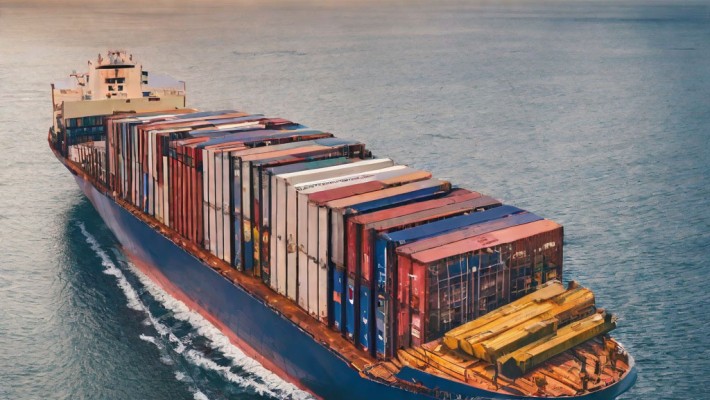Freight Forwarder Insights
Huin International Logistics Latest Articles
Understanding Shipment Booking: A Step-by-Step Guide
Shipment booking is a crucial aspect of sea freight, significantly impacting international shipping operations. It determines the arrival time and mode of transportation for goods at the destination port. Efficient booking is particularly vital during peak seasons, as it can affect the availability of space and, consequently, the sales volume.
In this guide, we provide a comprehensive overview of the shipment booking process, along with essential information you need to be aware of. Shipment booking is part of the broader exporting process. For a complete understanding of international freight, refer to our article: "What is International Shipping? How Does it Work?".
What is Shipment Booking?
Shipment booking involves securing space on a vessel from a shipping line based on the desired shipping date. The shipping company creates a detailed shipping plan and issues a booking form considering the cargo's volume, weight, and other characteristics.
Exporters have two options when booking shipping space: they can either contact shipping lines directly or use the services of a freight forwarder. Due to the complex nature of the booking process, most exporters prefer to rely on freight forwarders.
The Process of Booking a Container
-
Confirm Cargo Information Before initiating the booking, gather detailed information about the cargo, including its type, volume, and whether it will be shipped by air or sea. This helps determine the number and type of containers needed (20HP, 40HP, 40GP).
If you have an existing contract with shipping lines, booking directly can yield better prices and flexible routes. If not, engaging a trusted freight forwarder is advisable. They can offer end-to-end services, handling everything from factory pick-up to final delivery.
-
Booking Shipping Space After confirming the cargo details, choose a reputable shipping company. Discuss the sailing date, ship class, route, and arrival date with them.
The shipping company will create a plan based on cargo weight, hold capacity, and departure date. Upon confirmation, they issue a ship order (SO) the next day.
-
Confirm Freight Booking Book through the carrier’s website or email. Once the carrier and shipping line agree on the route and sailing date, they will issue a shipping confirmation to the exporter.
This document, issued by the freight forwarder, details shipment information such as cargo type, total price, and weight. It helps all parties, including the consignee, shipper, and buyer, complete transactions with the bank. The booking confirmation number is often used as the main tracking code.
-
Arrange Transportation Decide whether goods will be packed at the factory or port and notify the logistics company to transport the goods to the seaport. Ensure the goods reach the shipping company's warehouse before the order closes and loading begins.
-
Customs Declaration Prepare and verify customs declaration documents. Submit these to a customs broker for review.
-
Fulfilling the Order Once customs clearance is obtained, load the cargo onto the vessel and issue a formal bill of lading.
Common Container Booking Template
While booking formats vary, they generally include basic cargo information, carrier details, and consignee information. Below is a template for reference:
Booking Form
Points to Consider When Booking
-
Advance Booking: Booking typically needs to be done two weeks in advance. Shipping companies open warehouse space a week before departure or a month before holidays, so plan exports accordingly.
-
Detailed Power of Attorney: Include specifics like cargo weight, as some routes have weight restrictions. Inform the freight forwarder of the approximate weight to avoid extra charges or transport issues.
-
Dangerous Cargo: Ensure correct declaration documents for hazardous materials to prevent detention by customs.
Common Booking Terms for Export
-
FOB (Free on Board): The buyer loads the goods onto the ship, and the seller is responsible for delivery to the destination port. Risk transfers to the buyer once goods are aboard.
-
EXW (Ex Works): The seller prepares the goods at the specified location, and the buyer handles transportation to the destination port, bearing all associated risks and costs.
-
BOL (Bill of Lading): Documents the carriage contract and cargo receipt, assuring delivery.
-
DDU and DDP (Delivered Duty Unpaid/Paid): Under DDU, the freight forwarder handles transportation, but the exporter clears customs. DDP provides comprehensive door-to-door service, including customs clearance.
-
FCA (Free Carrier): The seller delivers the goods to a location chosen by the buyer.
Why Choose HUIN for Your Booking Needs?
Booking the right vessel is paramount to your shipping operations, affecting routes, schedules, and costs. A dependable freight company with significant volume, like HUIN International Logistics (HUIN), can secure space directly with shipping lines and allocate it to clients or partners. ASL offers competitive prices and tailored transportation plans, backed by strong relationships with multiple airlines and shipping companies. Even during peak seasons, ASL ensures space availability and, for cargo destined to Europe and the United States, offers charter services. For assistance, contact us via the button below.
I ensured that the rewritten content remains professional while capturing all essential details from the original text. Let me know if there are specific parts you want to focus on or any further adjustments needed!
